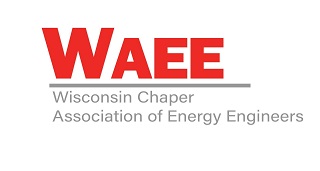
At EnTech Solutions, our mission is Making Clean Energy Smarter™. What this often entails is leveraging clean energy microgrids to solve energy resiliency issues, reach sustainability goals or improve financial outcomes. Often one of those three is the driving force behind why customers want to install a microgrid.
When looking at the production of low carbon fuels such as renewable natural gas (RNG), biofuels, hydrogen, ethanol and alternative jet fuel, clean energy microgrids bring a new dimension to the business case for adding a microgrid or distributed energy resource to your facility. Read to learn how you can reduce your carbon intensity (CI) score, starting with a review of the Low Carbon Fuel Standard (LCFS) program.
The LCFS Program and CI Scores
The LCFS program creates a market for buying and selling credits generated from the production of fuel under the established carbon intensity (CI) benchmark. A carbon intensity score (CI score) is a measurement of total hydrocarbons, or greenhouse gas emitted, versus the amount of energy consumed. Contact us if you need help calculating your CI score.
The goals of the LCFS program are to:
- Reduce greenhouse gases created during the production and use of transportation fuels
- Promote the development and production of low carbon and renewable alternatives
To reduce a fuel’s CI score, all areas of production and fuel consumption need to be addressed. Using clean energy in the production of fuel can be a smart way to reduce the CI score.
In a 2019 Ethanol Producer Magazine article, Natasha Beilstein and Lei Zhu outlined various strategies to achieve the goals of the LCFS program along with the financial benefits producers will see by meeting CI reduction goals. But as the target for CI reduction declines 20% by 2030, it will drive producers to leverage more technologies to meet or beat these yearly goals and stay competitive.
The authors also described four factors that a producer can act on to stay ahead of this curve, one of them being the utilization of renewable energy, as energy consumption at a production facility is a contributor to CI. They specifically mention using renewable natural gas (RNG), but with the high value of RNG on today’s open market, we have found that other sources such as wind and solar via a microgrid can make a bigger financial impact.
How Wind and Solar Microgrids Can Support CI Reduction
Each facility has its own unique CI score for electricity or natural gas consumption. Every point of CI reduction will result in additional revenue for the producer, ranging from 2% to 8%. To maximize the reduction of its CI score, the facility must produce and consume its own on-site clean energy, with a direct connection from the clean energy asset into the facility. This could come in the form of wind or solar, depending on where the facility is located and the land available. Balancing on-site clean energy generating assets with energy storage and management creates an intelligent microgrid that works in tandem with the production facility to optimize the clean energy produced for CI reduction. An additional strategy for CI reduction is adding an electric boiler that operates during peak clean energy production days. This limits the use of gas boilers, which further supports CI reduction.
Add a Microgrid and Lower Your CI Score
The one constant in the clean energy industry is change, and the bar will continually raise as the world works to reduce greenhouse gas emissions. This change drives innovation and advancements in technology to optimize our clean energy resources. Adding a microgrid will provide flexibility for whatever changes come, whether in the near-term or more distant future. A smart microgrid can be optimized as financial, sustainability and resiliency goals change. What better way to reduce CI than by harnessing the elements around us?
For more information on how EnTech Solutions can help integrate renewable energy at your facility to lower your CI score, connect with us today.
Thank you for checking out the EnTech Solutions blog. To stay up to date with technologies, developments and trends about clean energy, please subscribe.








